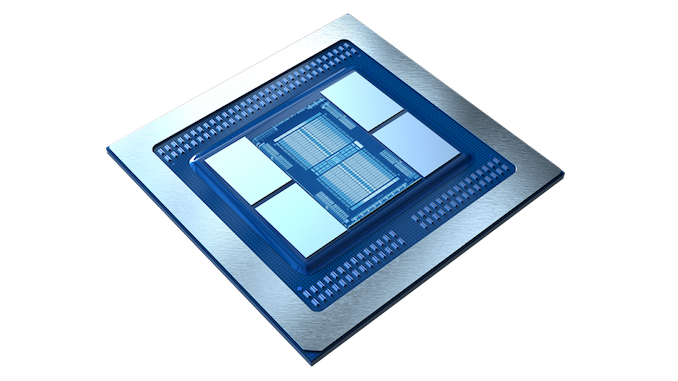AMD COVID-19 HPC Fund: Initial $15m Donation of EPYC and Radeon Hardware
by Dr. Ian Cutress on April 16, 2020 11:00 AM EST
One element to the recent pandemic has been the number of organizations banding together to unite for specific research into SARS-CoV-2 and COVID-19. We are in an era now where masses of computing power can help direct physical research into potential vaccines, or help analyse interesting molecular active sites to spur further research. The COVID-19 High Performance Computing Consortium is one example of this, with 25 active products, 31 members, and approximately 418 PetaFLOPs of compute power – this is compared to the world #1 supercomputer, Summit, which has only around a third to a half of this processing power. The latest news is that AMD is setting up a unique COVID-19 fund to provide additional computing resources where they are needed most.
The fund will initially start with a $15 million USD donation of systems powered by EPYC processors and Radeon Instinct GPUs to some key research institutions. Those institutions interested in gaining access to this hardware will have to contact the fund (COVID-19HPC@amd.com) with proposals, and it appears that AMD will provide systems on a meritorious basis. AMD is also set to contribute resources to the ‘Corona’ system at Lawrence Livermore National Laboratory, separate to the fund, in order to double the peak system performance there. AMD is also donating $1m to a variety of other funds to help in efforts, in addition to medical equipment, employee donation matching, and prioritizing shipments of embedded processors for use in medical equipment such as ventilators.
Other tech companies with significant donations to COVID assistance include Intel who has offered one million protective items for healthcare, $6m for Coronavirus relief, $40m in learning initiatives, $10m to support partner and employee-led initiatives, and also opened up some of its IP to researchers and scientists. Xilinx has donated $1.1m, split between several funds including the WHO and closer-to-home funds. Qualcomm has donated an undisclosed amount to several funds, including supplying laptops and devices to schools and non-profits tackling the issue.
For compute, Alibaba is offering cloud services to COVID-19 research free of charge, while Amazon’s AWS, NVIDIA, and VMWare and is donating unused GPU compute time to help Folding@Home. The NVIDIA one is interesting, as it seems that they have put the Saturn V supercomputer, consisting of 125 DGX-1 nodes, onto the problem. The entire of the Folding@Home processing power is now north of 2.5 ExaFLOPs, despite only hitting the 1 ExaFLOP barrier just over two weeks ago. RIKEN’s new supercomputer, Fugaku, in Japan, was set to be fully installed by 2021, however the portion that is currently built is now being made available to researchers who can use the resources.
The COVID-19 High Performance Consortium is currently the biggest culmination of off-site compute resources for researchers that need time on supercomputers. XSEDE’s website has a guide for researchers to submit proposals for compute time.










18 Comments
View All Comments
webdoctors - Thursday, April 16, 2020 - link
" Saturn V supercomputer, consisting of 125 DGX-1 nodes, onto the problem. "You could make a separate post just about this, clicking on your link it says it has 1.8exaFlops of power! That basically more than doubled the processing power of Folding@Home!
sor - Thursday, April 16, 2020 - link
Not if Folding is now at 2.5Exaflops as the article claims.skavi - Tuesday, April 21, 2020 - link
That number appears to be for a very specific operation. TOP500 has its Rmax at 3,307 TFlop/smode_13h - Tuesday, April 21, 2020 - link
You really need to be careful with Nvidia's numbers. They will tout 16-bit tensor core performance, every chance they get. 1.8 exaFLOPS is the quoted "AI performance", but that's not what HPC or F@H uses.If Saturn V has 15k V100 GPUs and each one has roughly 15 TFLOPS of fp32 or 7.5 TFLOPS of fp64, then aggregate performance is only about 225 petaFLOPS of fp32 or 113 petaFLOPS of fp64. Still fast, but an order of magnitude lower than F@H.
Ashinjuka - Thursday, April 16, 2020 - link
This is like when you're in deep shit in a game of Civ 2 and you put all your resources into science.Also, did anyone else get the mental picture of health care workers giving COVID tests wearing Intel bunny suits?
Deicidium369 - Friday, April 17, 2020 - link
In original Civ I would quickly research mathematics which would unlock the catapult - which I would use to ring the capital city of the computer players..